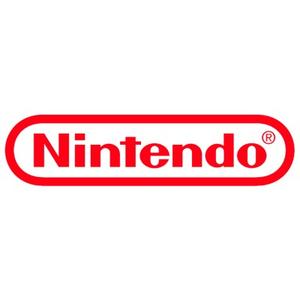Author: Ben Rose
Nintendo: Focusing on the Future
Based in Kyoto, Japan, Nintendo, loosely translated as “leave luck to him,” was founded by Fusajiro Yamauchi over 120 years ago in 1889. Nintendo’s modern era began when Hiroshi Yamauchi, a grandson of the founder, became president in 1950. Building on success in toys and games including its Ultra Machine and the Love Tester introduced in the mid-1960s, Nintendo later began to focus on home video consoles for color TVs in the mid-1970s. The company also began to develop its own games under the leadership of Shigeru Miyamoto, who remains the company’s visionary R&D chief. Under his influence, Nintendo created its most memorable and iconic characters, including Mario, Zelda, and Donkey Kong, a video game released in 1981.
In 1980, Nintendo launched the first in a series of hand-held gaming devices, and achieved critical acclaim with the introduction of the Game Boy in 1988. At the same time, the company continued to develop succeeding and successful generations of its hardware console devices, including the Nintendo Entertainment System (NES), which was launched in Japan in 1983 and in the US in 1985. NES bundled in various games, including the Super Mario Brothers, arguably Nintendo’s most iconic series, contributing to NES sales of over 60 million systems.
In 2002, after more than 50 years at the helm, Nintendo president Hiroshi Yamauchi, then aged 65, announced he would turn over the reins to 43 year-old Satoru Iwata, who had emerged from the ranks of Nintendo’s HAL Laboratory subsidiary to become the first non-family member to lead Nintendo. Two years later Nintendo introduced the Nintendo DS, its fourth major hand-held system, which featured a dual, touch screen, along with several successful game titles.
Shipped in time for the holiday season in 2006, Nintendo’s Wii became the most successful game system in the company’s history, ultimately selling over 100 million units, and catapulting the company’s stock to an all-time high of over 70,000 Yen per share on the Osaka Stock Exchange. The console featured relatively straight forward controls, including a remote control device to detect 3D movement, as well as internet connectivity, and the ability to run previous generation Nintendo games. The Nintendo Wii was the best-selling game console of its generation, decisively outselling both the Sony Playstation 3, as well as the Microsoft Xbox 360.
The Wii U, a successor to the Wii, shipped in the fall of 2012, and is generally considered to be among the more disappointing game consoles in the company’s history, inception to date selling nearly 11 million units as compared to over 100 million units for the Wii. The Wii U’s under-powered graphics, closed computer architecture, and paucity of third party game titles available at launch and afterwards, are considered to be among the leading causes of the product’s relatively mediocre performance.
Beginning in January 2014, following the announcement of a 30 percent contraction in profits during the prior nine months, Nintendo then president and CEO Satoru Iwata announced that he would take a 50 percent cut in pay, and that salaries of other key executives would be cut by 20-30 percent. In January of 2015, Nintendo announced its exit from the Brazilian games market.
In March of 2015 Nintendo began a strategic shift and announced that it would for the first time develop mobile games utilizing Nintendo characters for Apple and Android devices through an alliance with DeNA, a Japanese developer of mobile games. At the same time, Nintendo reaffirmed its commitment to dedicated gaming devices, with plans to launch a next-generation video game machine. Having staged a major turn-around in company profitability and performance, as well as a revitalization of the Nintendo brand, the company posted its first profitable fiscal year in several years for the period ended March 31, 2015.
Nintendo continues to maintain very high market share in the handheld device and game category, led by its 3DS platform which currently accounts for about 60 percent of sales and may hold as much as 80 percent of the dedicated market for hand-held gaming devices. In the last year, the company recently launched refreshes of these products in Japan, the US and in Europe, and will launch new software titles for the devices in the coming year. In addition, Nintendo is benefitting from new software titles for the Wii U platform, such as Splatoon, as well as amiibo action figure toys, based on characters from its games, which have been an important tie in to its 3DS and Wii console devices.
We see Nintendo working on three key initiatives to drive growth:
- Development of sequels and new games for the 3DS and Wii U platforms.
- Creation of a next generation “brand new” concept video game device, code-named NX;
- Mobile games for Apple and Android devices that incorporate elements of social networking as well as draw upon its extensive library of video game characters.
Over the last number of generations Nintendo has developed a remarkably creative and collegial corporate culture. For this reason, Tatsumi Kimishima, a Nintendo managing director, who was recently appointed president of the company, will play a key role. Mr. Kimishima replaces Satoru Iwata, Nintendo’s highly-respected president who passed away in July after battling an illness for several years. Iwata led the company through its greatest era of achievement during which the Wii U sold over 100 million units, and more recently developed the company’s mobile strategy.
After having been personally recruited by Nintendo’s legendary Hiroshi Yamauchi 16 years ago to become CFO of the Pokemon Company, a Nintendo affiliate, Mr. Kimishima, now age 65, went on to become president of Nintendo of America, the company’s largest division, in a relatively short time period. In addition to having been a member of the company’s board of directors prior to his appointment as president, he was also one of only a few managing directors, and recently held the position of head of human resources. Prior to joining Nintendo, he spent 27 years with Sanwa Bank, now a part of the Bank of Tokyo.
Our sense is that while Kimishima may lack the technological depth of his predecessor, and may not have the creative talent of several of Nintendo’s key leaders, his understanding of the company’s corporate culture, deep knowledge of Nintendo’s creative games and operations experience as head of Nintendo of America, gives him a unique perspective to manage the company during this crucial time in the company’s history.
Hello world!
Welcome to WordPress. This is your first post. Edit or delete it, then start writing!
Veeva Systems: Taking the Cloud to Life Sciences
 With projected calendar 2015 sales of $410 million and a market cap of roughly $3.3 billion, Veeva Systems is a leading provider of cloud software for salesforce automation, content management, and sales contact data to the global life sciences industry. Based on an exclusive software license from salesforce.com (NYSE: CRM), Veeva’s CRM software is now utilized by 17 of the top 20 largest pharmaceutical and biotech companies, including eight of the top 10. Within the top 20, only three have thus far not made the switch to Veeva: Switzerland-based Roche Holding, France-based Sanofi, and France-based Novo Nordisk, which ranks in the top 15.
With projected calendar 2015 sales of $410 million and a market cap of roughly $3.3 billion, Veeva Systems is a leading provider of cloud software for salesforce automation, content management, and sales contact data to the global life sciences industry. Based on an exclusive software license from salesforce.com (NYSE: CRM), Veeva’s CRM software is now utilized by 17 of the top 20 largest pharmaceutical and biotech companies, including eight of the top 10. Within the top 20, only three have thus far not made the switch to Veeva: Switzerland-based Roche Holding, France-based Sanofi, and France-based Novo Nordisk, which ranks in the top 15.
Veeva has identified an annual market spend of over $5 billion in software for CRM, content management, and sales data, and so it has much running room ahead. Veeva has already captured an estimated 50 percent of the CRM market for pharma and biotech, and could very well capture as much as 60 percent of the market over the next several years, as the company continues to roll out new seats to existing customers, and sell additional CRM add-on modules.
Since Veeva is cloud-based, and features a multi-tenant architecture, the company can update the software of its entire customer base at the same time, reducing the time, aggravation, and cost associated with maintaining and updating several versions of the same software program. Veeva’s cloud-based product set stands in contrast to two of its largest competitors, Oracle (NASDAQ: ORCL), and IMS Health Holdings (NYSE: IMS), which support and maintain several software packages simultaneously, many of which have been developed for older client server computer systems, and are not hosted in the cloud. Support for these older software products detracts from keeping their cloud products up to date, which will likely lead to further market share erosion.
Veeva’s newer products for content management and sales data, respectively, accounted for less than 10 percent of sales a year ago, but now account for about 20 percent of product sales. These products carry slightly higher gross margins than the company’s CRM products, and more than double its addressable market. Veeva has additional room to sell Veeva CRM, Veeva Vault, and Veeva Network to existing and new customers, as well as to sell the new products to other segments in the life sciences market, such as medical devices, laboratory instruments, and CROs—segments with which the company conducts limited business currently.
Veeva benefits from an experienced management team, led by Peter Gassner, a former SVP of Technology at saleforce.com, and at Peoplesoft (later acquired by Oracle), where he was Chief Architect and General Manager for PeopleTools, and at IBM Silicon Valley Lab, where he participated in database research and development. Matt Wallach, co-founder and President, was formally GM of the Pharmaceuticals and Biotechnology division of Siebel Systems (later acquired by Oracle). CFO Tim Cabral has held financial management positions at Peoplesoft and other technology companies. Detailed knowledge of the specific needs of the pharma and biotech segments, gives Veeva a leg up over its competitors, many of whom have only general knowledge of the life sciences sector.
Veeva has a strong balance sheet, which features $438 million in cash and no debt, and continues to generate very solid cash flow, all the while growing the business, while running at a 30 percent operating margin in the most recent quarter.
- ‹ Previous
- 1
- …
- 3
- 4
- 5


